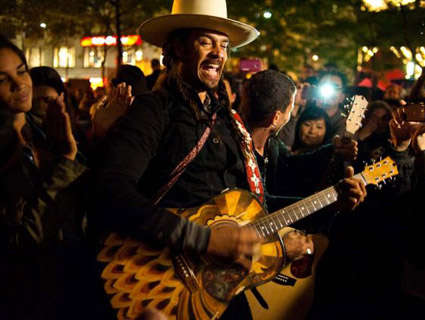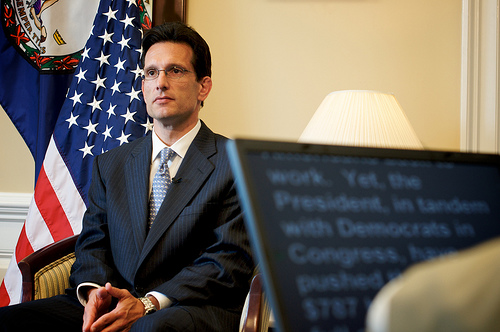In the New York Metro section of yesterday’s New York Times, Cara Buckley portrays the Wall Street occupiers as an unruly band of outsiders who’ve come to terrorize the locals. They rudely befoul restaurant bathrooms without buying anything. They crowd moms and baby strollers off the sidewalks. They flash their tits in broad daylight. The image that comes to mind is that of the bridge-and-tunnel crowd gone wild, or college tourists on spring break at the Jersey Shore.
Even if there’s some truth to this, I can confidently say that Buckley and many other reporters are missing something: Occupy Wall Street was bound to happen at some point even if the Manhattan police sealed off every one of the island’s bridges and tunnels. The same vast economic disparities that have outraged so many middle class Americans are only magnified here. A little-known fact about Manhattan, otherwise known as New York County, is that it has the highest level of income inequality of any urban county in the nation. The only US county with a wider gap between rich and poor is Willacy County in South Texas, a ranching community packed with unemployed farm workers where one wealthy individual owns a third of the land.
Without a doubt, many people who live near the New York Stock Exchange feel under siege. It’s less clear whether most other Manhattanites give a damn. Consider this: the average price (PDF) of a Financial District studio apartment in Manhattan is more than $2,200 a month (and that excludes apartments with doormen, which cost more). According to a 2006 story in the Gotham Gazette, the district that includes the Financial District and Greenwich Village had the highest median rent of any part of Manhattan. While I couldn’t find more recent stats on the area’s median housing cost last night, it’s pretty safe to assume that most New Yorkers who are hurting from the recession don’t live there.
Why does this matter? Certainly, trashing bathrooms or intimidating stroller moms is never OK. (As for nudity, well, I’m from San Francisco). Given the social and economic divisions in New York, though, it’s amazing that those are the worst things that have happened.
Going forward, the mainstream media could do a better job reporting how New Yorkers feel about Occupy Wall Street. And Occupiers from out of town would do well to consider how to bring in more locals, who could help give the movement staying power. It’s one of the many things I hope to explore when I set up Mother Jones’ outpost in Zuccotti Park later today.








